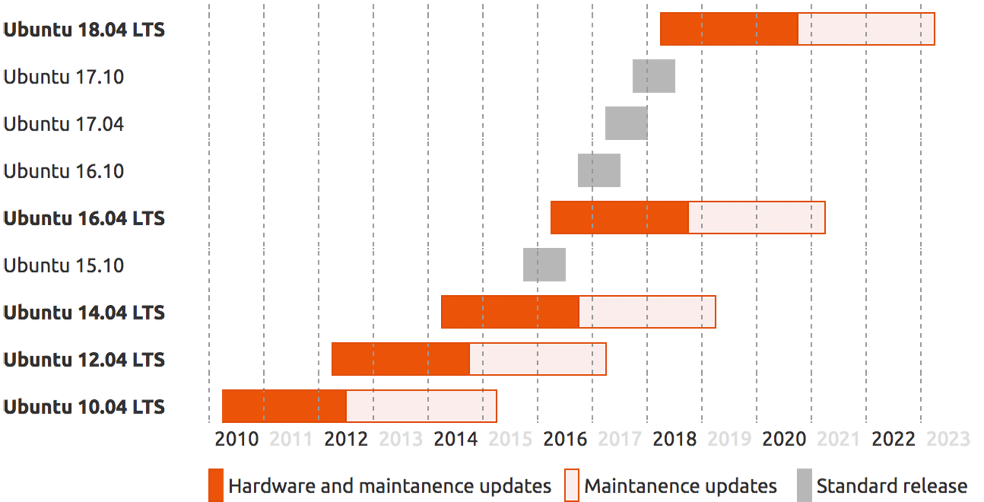lts - What's the difference between a Long Term Support Release and a Normal Release? - Ask Ubuntu
what differences between ubuntu long term support release (lts) , normal release?
there new release every 6 months (in april , october), version number being year.month (e.g.: 16.04 released in april 2016). every 2 years, april release long term support version.
all normal releases (13.04 , later) supported 9 months.
all lts releases (12.04 , later) supported five years on both desktop , server.
older versions had different support cycles, haven't been included they're unsupported now. see ubuntu wiki historical information.
now, support means:
updates potential security problems , bugs (not new versions of software)
availability of commercial support contracts canonical
support landscape, canonical's enterprise oriented server management tool set
the desktop refers packages in main , restricted repositories, these ones have little ubuntu icon next them in synaptic or marked supported in software-centre respectively.
the server packages ones in "server-ship" , "supported-common" seeds (there's directory of of different seeds available).
this looks like:
image ubuntu.com
the primary reason using lts release can depend on it being updated regularly , therefore secure , stable.
as if wasn't enough, ubuntu releases additional versions of last lts between releases—such 14.04.1, incorporate of updates point. called point-release (or snapshot). released every quarter half year, needed.
in addition support, there development strategies differentiate lts release:
the base of operating system, debian, comes in 3 versions: stable, testing , unstable. normally, ubuntu based on unstable; lts releases based on testing. starting 14.04 lts, new releases based on debian unstable.
the development effort lts release in focused on providing rock solid base, not customers want lts release, next 3 ubuntu versions come.
thanks oli demystifying last part, wasn't quite sure it.

Comments
Post a Comment